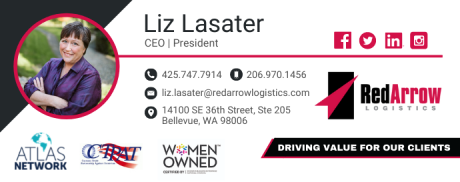Keeping transportation costs down in today’s market is a challenge for any business, particularly for smaller companies. Contract pricing helps to keep shipping costs more consistent because they are long-term rates for regularly scheduled volumes of freight.
What are Contract Rates?
Contract rates are also known as primary or dedicated rates. When looking for shipping rates, a company will send out an RFP (Request for Proposal) in which it takes its anticipated shipping requirements to transportation providers such as carriers or 3PLs. The company is looking for a commitment on price for the next year, or however long the contract states. The shipper will give lanes to providers based on their rate, service, and capacity. This works for the carrier as well because they get a consistent volume of business.
Benefits of Contract Rates
There are thousands of carriers and shippers in the U.S. truckload market that all have their own requirements and preferences. This means that the market is constantly changing depending on supply and demand.
Contract rates benefit shippers with:
- – Improved Forecasting and Budgeting
- – Reliable Capacity
- – Strategic Carrier Partnerships
- – Accountability from Providers (KPI tracking)
Contract rates are advantageous to carriers because they:
- – Give Predictable Revenue
- – Are Consistent
- – Provide Efficient Driver Scheduling
- – Increase Driver Satisfaction
Contract pricing creates stability in the ever-changing, difficult-to-predict transportation market.
What is the Difference Between Contract and Spot Rates?
Not all shippers use only contract or only spot rates. In fact, many businesses find that a blend of both suits their business the best. Spot rates are short-term, transactional freight pricing that reflects the balance of supply and demand in the market. They are used most often in the following scenarios:
- The primary carrier cannot cover a shipment.
- There is an unexpected shipment.
- There is a smaller or infrequent shipment that does not justify contract pricing.
Contract rates are usually to the benefit of shippers as carriers will negotiate in order to get guaranteed freight volume. However, there are many factors that influence the rates in relation to the market. Sometimes contract rates are higher than spot rates, sometimes they are lower, and sometimes they are the same. When capacity is tight, spot pricing is usually higher than contract rates, but when there is an abundance of capacity, spot market rates are lower.
Spot Rates in Relation to Contract Rates
The spot market rates in the three-to-six-month time frame leading up to a bid affect what the contract rate will be. When spot market pricing is relatively high, contract rates will go up in the next bid cycle. When they are relatively low, contract rates remain stable or could possibly go down. Most shippers put out an RFP once a year, between Q4 and Q1, to secure contracted capacity for the next year, although quarterly or mini bid for a specific period can also be utilized by lower-volume shippers.
How Much Freight Volume is Required for Contract Rates?
A shipper of any size can put out a transportation RFP to secure pricing for the following year. They just need consistency in a shipping lane and an estimate of the load volume in each lane. There is no minimum shipment requirement as contract rates depend more on the type of freight and where it is coming from and going. Contract rates might not be cost-effective for very low shipment volumes, so it is recommended to explore options in that case.
What to Include in a Transportation RFP
The more providers know about the freight, the more accurate rates you will receive. The following should be included: commodity, weight per load, origin and destination zip codes for each lane, estimated shipping volume for each lane, shipment frequency, performance requirements, accessorials, and the cargo value. Since fuel fluctuates a lot, especially lately, many contract rates include a base rate + fuel surcharge (FSC), which is determined by a schedule, according to the price of diesel. A digital platform like a Transportation Management System (TMS) can help to track and store supply data like procurement information.
Contract and spot rates offer shippers a different value, with contract pricing providing long-term security in price and capacity, and spot rates being a good choice for smaller or non-regular shipments. Red Arrow Logistics can help your business secure the best pricing for your freight shipping. Contact us today to find out more.
Your Trusted Partner
At Red Arrow Logistics, we provide expertise and white glove customer service with fast-growing, complex, and high-value supply chains. As the next-generation model of logistics companies, we offer tailored transportation and logistics solutions — from single shipments to complex over-dimensional and international orders.
Red Arrow offers the scale and scope of services including air, ocean, and ground transportation to meet the budget and schedule requirements of the largest and smallest companies alike. If we can be of assistance, please email us at info@redarrowlogistics.com or give us a call at 425-747-7914.





